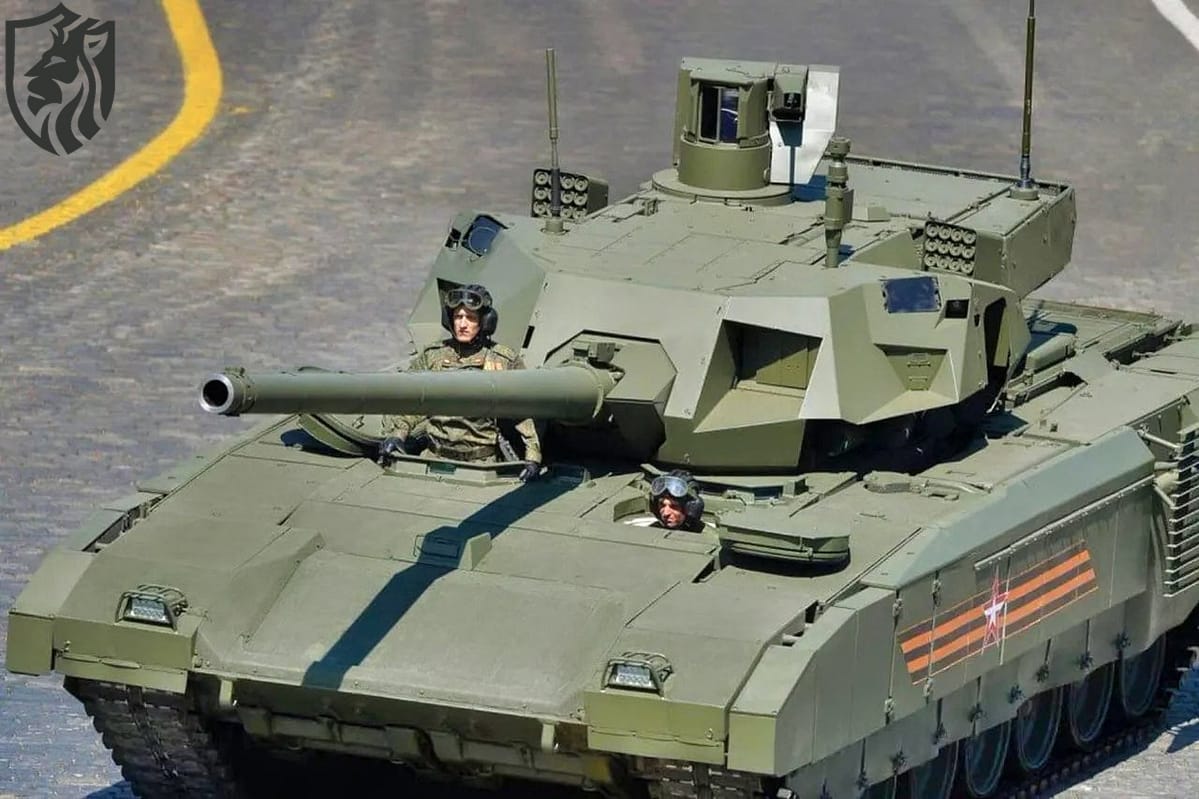
Russia’s T-14 Armata
Why the T-14 was meant to change everything
In 2015, Russia introduced the T-14 Armata, a radical departure from previous designs. It promised a protected crew capsule, an unmanned turret, and advanced armour. Russia’s T-14 Armata also introduced the Afghanit active protection system to defeat incoming threats. Expectations soared after its Red Square debut; however, reality quickly pushed back.
The ambition—and the engineering
The Armata platform targeted a family of vehicles, not just a tank. Designers at Uralvagonzavod aimed for a universal chassis to simplify logistics and upgrades. The three-person crew sat in an armoured capsule, isolated from ammunition. Meanwhile, the unmanned turret reduces exposure and enables future automation.
A 1,500 hp A-85-3A diesel was slated to deliver brisk mobility for a 50-plus-tonne class. Sensors, battlefield networking, and radar-aided protection rounded out the pitch. On paper, Russia’s T-14 Armata played a parity game with the West’s digitised main battle tanks.
From parade to production hell
The first public outing exposed fragility: one tank stalled during rehearsal. That was a warning sign, not a verdict, yet testing revealed reliability gaps and component wear issues. Costs spiked as bespoke parts replaced off-the-shelf items. Crucially, Russia never finished a true automated production line. Prototypes and pilot vehicles were assembled almost “by hand”, which is fine for concept validation, not mass fielding. Therefore, unit prices rose while output flatlined.
Sanctions bit, then bit harder
The sanctions after 2014—and much tighter ones after 2022—choked access to microelectronics, optics, and specialised materials. Substitution with domestic parts often degraded performance or availability. Lead times stretched; integration risk soared. Original plans calling for hundreds, even thousands, by 2020 evaporated.
Consequently, procurement managers turned to what Russia could actually scale: T-72B3, T-80BVM, and T-90M upgrades using existing lines and known suppliers. Russia’s T-14 Armata continued to serve as a symbol of intent rather than inventory.

“Too Expensive” for combat
Rostec’s leadership later conceded the obvious: the T-14 is extremely costly and ill-suited to the current fight. In high-attrition warfare, survivability matters, but so does replaceability. A force fed by upgraded T-72/T-80/T-90 variants offers steadier numbers, simpler training, and lower risk to the industrial base. Moreover, spare parts pipelines already exist, while Armata’s would be fragile for years. Russia’s T-14 Armata thus became a prestige item rather than a war-winning staple.
Capability vs Practicality
On capability, Armata’s architecture remains forward-leaning: crew survivability, modular protection, APS, and digital fusion. In practicality, the platform under-delivered: poor reliability in early testing, scarce components, and no mature line. When sanctions complicate every board and bearing, the practical path wins. Therefore, Russia is doubling down on iterative upgrades and battlefield refurbishments.
What the “non-arrival” teaches
First, industrial strategy beats glossy specs in wartime. Modern MBTs are software-defined, supply-chain-dependent systems that rely heavily on vendor depth and component sovereignty. Second, costs must align with attrition realities.
A tank that is not scalable in terms of purchase, crewing, and maintenance represents a strategic stalemate. Third, sanctions reshape design choices. Workarounds can restore partial capability; however, they rarely maintain the original performance standards.

Could Armata still fight?
Never say never. If Russia restores access to key electronics—through domestic ramps, partner supply, or grey channels—the T-14 could appear in limited roles. Trial units might test survivability claims and APS performance under fire. However, without a true line, meaningful force structure impact remains unlikely. The T-14 Armata tank from Russia may still validate concepts that could influence future upgrades, but widespread deployment appears unlikely.
Bottom line
The Armata story is less about a single tank and more about system-of-systems economics. Design revolutions falter when industrial ecosystems lag. For planners and observers, the lesson is clear: prioritise scalable manufacturing, electronic supply assurance, and lifecycle cost realism—especially when sanctions are a given.
References
- Reuters — Rostec says the T-14 Armata is too expensive for mass use: https://www.reuters.com/
- RUSI analysis of Russian armour modernisation and production limits: https://rusi.org/
- SIPRI — Sanctions and Russia’s arms industry dependencies: https://sipri.org/
- Oryx—visual tracking of Russian armour losses and variations: https://www.oryxspioenkop.com/






